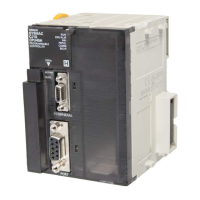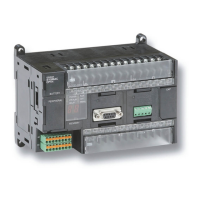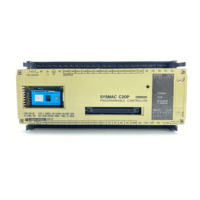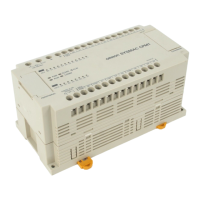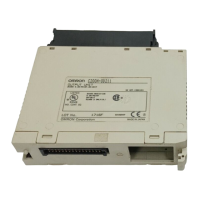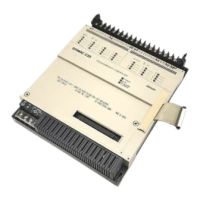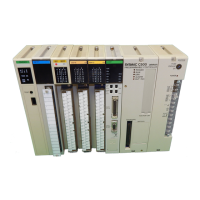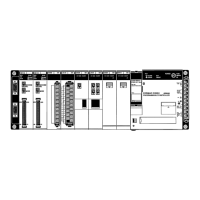2-1SectionPerformance Specifications
12
Item Specification
Effect on CPU Unit’s cycle time • When data exchange is performed using the words allocated in the
CIO Area only: 0.2 ms
• When data exchange is performed using words allocated in the DM
Area or the LR Area: 0.5 ms
Internal current consumption CS1W-HIO01: 600 mA at 5 VDC
CS1W-HCP22: 800 mA at 5 VDC
CS1W-HCA22: 750 mA at 5 VDC, 150 mA at 26 VDC
Dimensions 34.5 × 130 × 100.5 mm (W × H × D)
Weight CS1W-HIO01: 250 g max.
CS1W-HCP22/HCA22: 350 g max.
Standard accessories CS1W-HIO01
One OMRON C500-CE241 Connector Set for connecting to I/O
connector (soldered type; socket: FCN-361J024-AU made by Fujitsu;
connector cover: FCN-360C024-J2 made by Fujitsu)
CS1W-HCP22/HCA22
In addition to the above, one C500-CE404 Connector Set (made by
OMRON) for connecting to special I/O connector (soldered type;
socket: FCN-361J040-AU made by Fujitsu; connector cover:
FCN-360C040-J2 made by Fujitsu)
Program and Memory
Item Specifications
Control method Stored program
I/O control method Cyclic scan and immediate processing are both possible.
Customizable Counter Unit operating modes RUN mode, MONITOR mode, PROGRAM mode
RUN/STOP specification method for
Customizable Counter Unit’s program
Select between the following:
1. RUN/STOP commands from the CPU Unit’s allocated memory
2. Operating mode command at startup, or command from the
Programming Device after startup
Status output to CPU Unit Unit’s operating mode (RUN/STOP), fatal errors, CYCLE TIME
OVER errors, Unit error codes, etc.
Compatible Programming Devices Programming Console (C200H-PRO27 or CQM1H-PRO01) or
CX-Programmer Ver. 1.2 or later (Specify CQM1H as the PC type.
There are restrictions, such as the program capacity.)
Programming language Ladder diagram
Execution modes Possible to switch between Normal Execution Mode and High-speed
Execution Mode.
• Normal Execution Mode: 0.4 ms for LD instruction
• High-speed Execution Mode: 0.2 ms for LD instruction
Program capacity 4 Kwords (Normal Execution Mode)
Note In High-speed Execution Mode, the capacity for which execution
(compiling) is possible is restricted. Also, whether or not pro-
grams can be executed depends on the contents of the pro-
gram. The average program capacity in High-speed Execution
Mode is approx. 1 Kword.
Instruction length 1 to 4 words per instruction
Number of instructions 113 (14 basic instructions and 99 special instructions)
Instruction
execution time
Basic instructions
Normal Execution Mode: 0.4 ms (LD instruction)
High-speed Execution Mode: 0.2 ms (LD instruction)
Special instructions
Normal Execution Mode: 4.8 ms (MOV instruction)
High-speed Execution Mode: 4.4 ms (MOV instruction)

